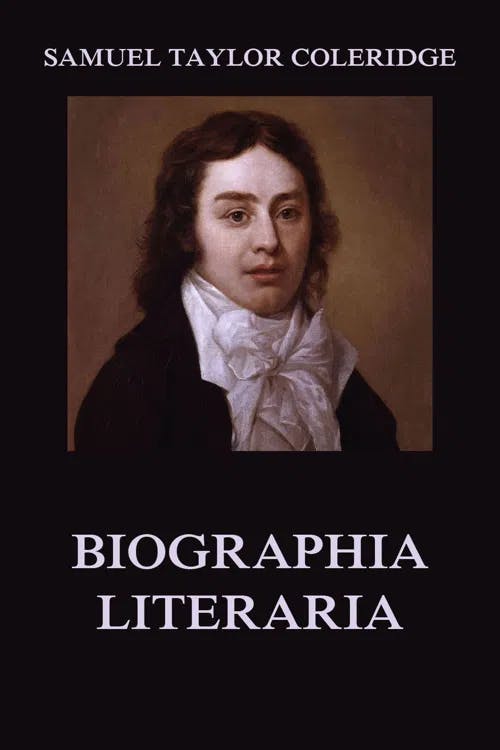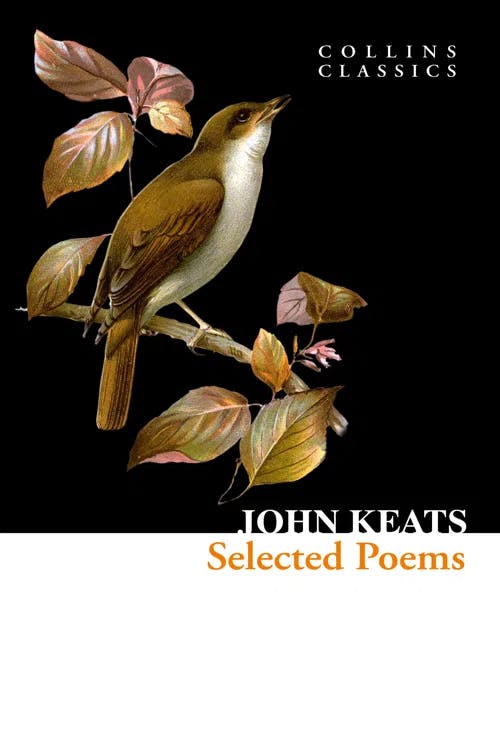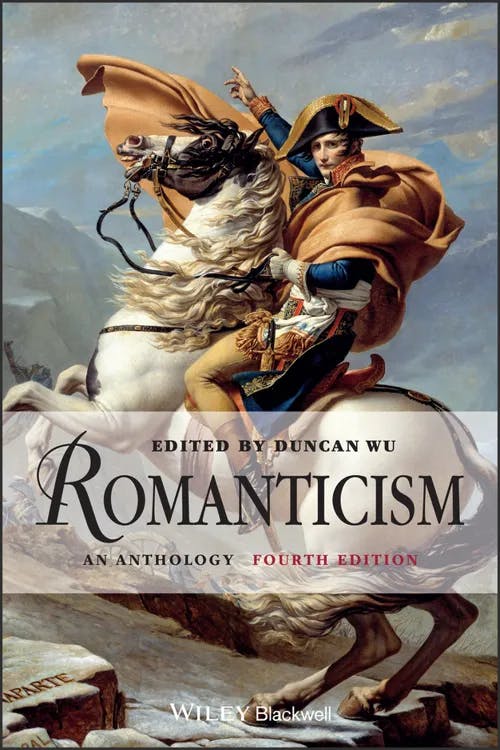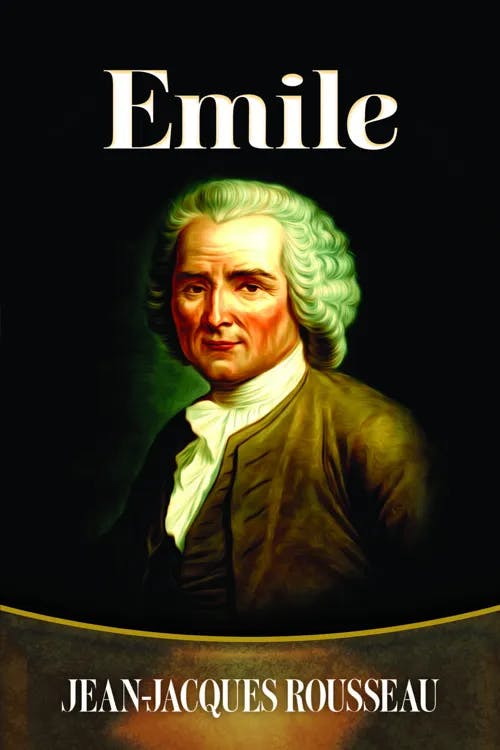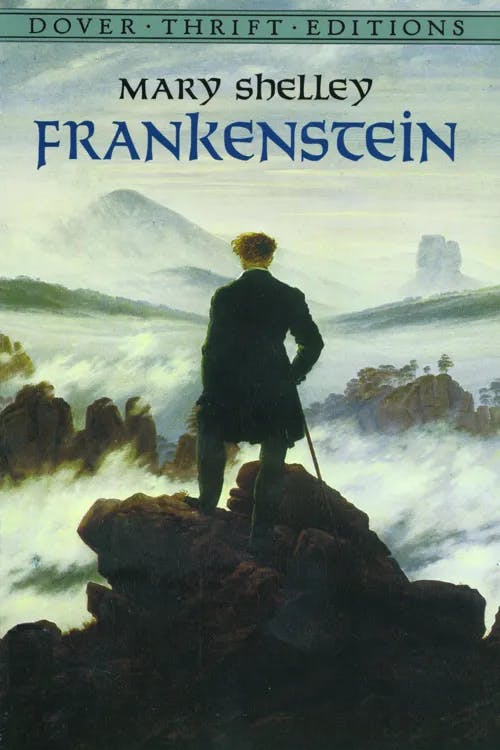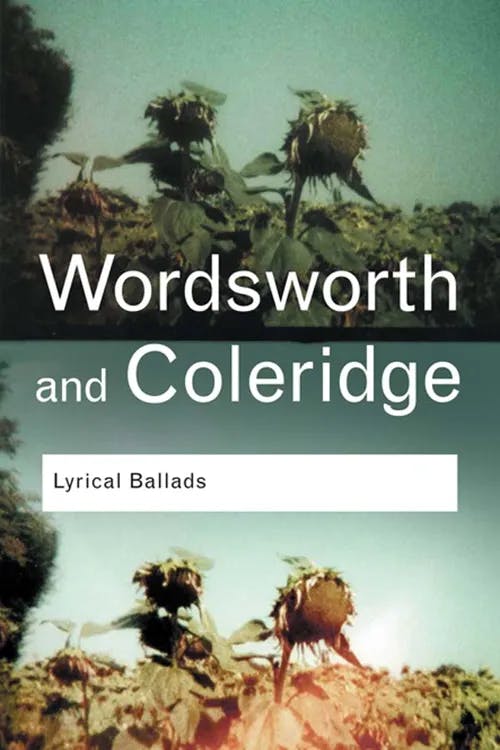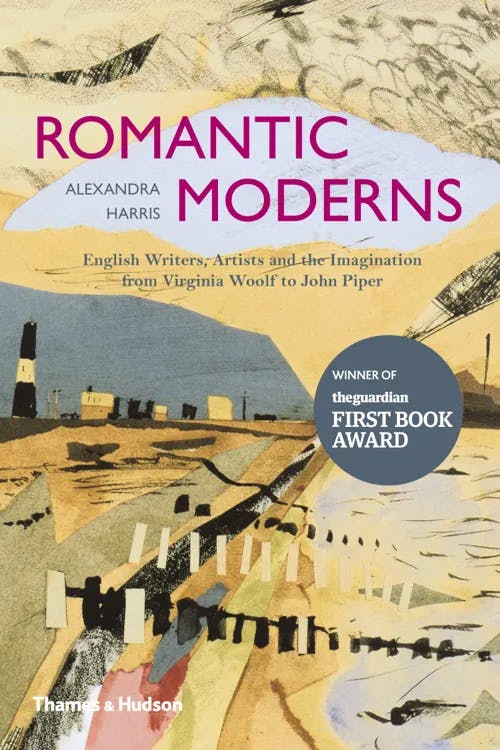What is Romanticism?
PhD, Media Arts (Royal Holloway, University of London)
Date Published: 22.11.2023,
Last Updated: 07.03.2024
Share this article
Defining Romanticism
When we say “romantic,” we usually mean gestures of love or intimacy, and the act of “romanticizing” refers to an idealistic, rose-tinted lens through which to see reality. Romanticism, however, denotes a period of Western history where a specific ideology was developed, an ideology that has shaped many of our concepts today. Rather than merely being a historical event or artistic movement, Romanticism has come to refer to a whole system of thought.
In a general sense, Romanticism was a cultural movement which flourished in the Western world from the end of the eighteenth century right up to the mid-nineteenth century. A response to the intellectual, political, and industrial changes of the modern period, Romanticism emphasized and defended individualism, freedom, nature, emotion, and expression. These concepts are a consistent thread throughout Romantic works. Fundamentally, Romanticism eschewed order, rationality, rules, and precision in favor of unbounded human feeling.
Although Romanticism is reflected in eighteenth and nineteenth century visual arts — in theater and architecture, music, politics and philosophy — it is most significantly embodied in its literature. Romanticists like William Wordsworth (1770–1850), Walt Whitman (1819–1892), Charlotte Bronte (1816–1855), Victor Hugo (1802–1885), Lord Byron (1788–1824), William Blake (1757–1827), Mary Shelley (1797–1851), and Samuel Taylor Coleridge (1772–1834) are all found in the literary canon. Romantic poetry particularly epitomized the Romanticist ideology, and it remains some of the most revered poetry in literary history.
In Biographia Literaria (1817) Coleridge describes his Romantic poetic project, asserting,
A poem is that species of composition, which is opposed to works of science, by proposing for its immediate object pleasure, not truth. (1817, [2018])
Samuel Taylor Coleridge
A poem is that species of composition, which is opposed to works of science, by proposing for its immediate object pleasure, not truth. (1817, [2018])
This illustrates the priorities of Romanticism: feeling and emotion over rationalism and intellectualism. Romanticism rejected the prevailing ideology of the Enlightenment, which championed reason, materialism, and the classical traditions of more “enlightened” societies like ancient Greece and Rome. In contrast, Romanticism sought artistic examples in the “uncouth” Gothic aesthetic of medievalism in order to restore belief and expression.
Despite what Coleridge suggests in the above quote, it is not that Romanticism was uninterested in truth, but rather that it rejected the authority of scientific truth or the Enlightenment belief that logic and reason were its sole arbiters. Logic and reason, for the Romanticist, could not account for the richness of life; truth was not merely a cold, hard, objective fact, or deducible by the intellect. Romanticism was more compelled by the instances in which these faculties were overpowered, where passion and feeling triumphed over intellect. This led to the belief that truth was an aesthetic feature. The Romanticists felt that the appreciation of beauty should be the ultimate human pursuit, and that it should frame our experience and understanding of the world rather than exist separately from knowledge and rationality. As Keats famously asserts in “Ode on a Grecian Urn” (1819),
"Beauty is truth, truth beauty,"—that is all
Ye know on earth, and all ye need to know.
(1819, [2014])
John Keats
"Beauty is truth, truth beauty,"—that is all
Ye know on earth, and all ye need to know.
(1819, [2014])
Romanticism established a different way of looking at and comprehending a modern world that had removed human expression and feeling from notions of productivity and knowledge. Romanticists sought to imbue the modern world with the virtues they thought were being lost: beauty, subjectivity, love of nature, and spirituality. Rather than being a historical event, Romanticism was a carefully developed set of ideas; a lens through which to look at an increasingly mechanized world.
Because Romanticism encompasses a wide range of cultural, intellectual, and political activities — the British Romantic poets, the French revolutionaries, the German philosophers and biologists, and more — this study guide will focus on the broad themes and historical circumstances that connect them all.
Historical context of Romanticism
Romanticism was a response to the huge cultural and intellectual shifts taking place in the early modern period. It is seen as being both a part of, and opposed to, the ideas of the Enlightenment. The Enlightenment was a historical moment that saw the restructuring of society and the employment of rational intellect in the name of freedom. As Duncan Wu explains in Romanticism,
The process by which people were awakened to a sense of self-determination was global. It began with the American Revolution and continued with that in France. And the impact of those upheavals cannot be overstated. (2012)
Edited by Duncan Wu
The process by which people were awakened to a sense of self-determination was global. It began with the American Revolution and continued with that in France. And the impact of those upheavals cannot be overstated. (2012)
These uprisings reverberated around the world. Political and religious authority was being questioned in favor of publicly corroborated ideas, secularism, and societal progress. This progress was mirrored by the Industrial Revolution, characterized by the arrival of urbanization, consumerism, and mechanization. Travel became faster and more accessible, towns became cities, and factory workers were employed by the thousands. In the Western world, this created a certain kind of modern society made distinctive by mechanism, rationality, and globalization.
Romanticism was a push against this progress. Broadly speaking, it shied away from this vision of society, instead reveling in solitude, subjectivity, and emotional expression. Rather than embracing the advances of modernity, Romanticism venerated a rural life, with close proximity to the natural world. In this way, Romanticism represented an outlet — a sort of counterculture — for those who felt unrepresented and unembraced by the modern world.
Key themes of Romanticism
Because Romanticism did not take place in one locale, and nor was it intentionally formed by an appointed group, it is best understood through the key themes and ideas that unite it in all its facets and iterations. In the following section, we will explore some examples of these central themes.
Nature
According to Romanticism, the natural world is a touchstone of beauty, truth, and imagination. In poetry, Blake, Wordsworth and Coleridge wrote about trees, flowers and clouds while J.M.W. Turner (1775–1851) and Eugène Delacroix (1798–1863) painted dramatic and richly colored landscapes. In all cases, the natural world played host to intense emotions and new ideas, acting as a place of refuge from the bustle of industry and mechanization. It is clear that nature was not only the object of admiration and wonder for the Romantics but the experience of the natural world was akin to spiritualism. Romanticism enacted a fundamental unity between humans and nature.
In science, Romanticists found that the prevailing position of the Enlightenment reduced nature to a mechanism; othering the natural world and trying to control it. Romanticism felt that empathy for nature — an understanding of its complex living processes — was an intrinsic human quality; that a oneness with nature was the essential human state. For German Romantic biologists like Johann Wolfgang von Goethe, nature represented a crucial interface between subjective and objective realms; a dialectical synthesis between the sensory and the material. In this profound way, nature was central to the project of Romanticism.
Children
In 1762, philosopher Jean-Jacques Rousseau published Emile, or On Education. The fundamental position of this work is that human nature is inherently good, but that modern society has a corrupting effect. Rousseau writes,
We pity the sufferings of childhood; we should pity ourselves; our worst sorrows are of our own making. (1762 [2013])
Jean-Jacques Rousseau
We pity the sufferings of childhood; we should pity ourselves; our worst sorrows are of our own making. (1762 [2013])
Rousseau sets out to develop a method by which the child retains this essential goodness, including, notably, the emphasis on breastfeeding to cultivate intimacy and connection. But what arises as a central argument is the importance of children in elucidating human nature. Children are emotional, they are joyful, they play, they understand nature and, perhaps most crucially, they know no rules. For the Romanticists, this was the ideal state of being. This freedom from structure and tradition was what Romanticism strove for. The figure of a child features heavily in Romanticist art as a symbol of innocence, autonomy, rebellion, unbounded imagination, and connection to nature. This approach to childhood is still alive today in alternative education systems, such as the Steiner Waldorf approach which prioritizes individuality, nature, and self-expression.
The Romantic hero
The Romantic hero is an archetype we are likely familiar with. Many pieces of Romantic fiction feature a tortured, misunderstood, marginalized character whose many virtues are lost on an oppressive and rule-bound society.
Examples of this characterization can be found in Mary Shelley’s Frankenstein (1818). The “creature” that Victor Frankenstein builds is sensitive and intelligent, but tragically misunderstood due to his monstrous appearance. This treatment eventually turns him into the monster others perceive him to be. Victor, seeing this, is overwhelmed with guilt and both characters end up exiled from society at different times in the novel. Although both Victor and his creation are parallel tragic figures, Victor particularly illustrates the Romantic hero archetype. Victor starts out as a curious child with a propensity for the sciences, but his hunger to play God, paired with his use of modern technologies, corrupts him. This much is evident in his dying words, where he warns others not to make the same mistake:
Seek happiness in tranquility, and avoid ambition [...]. (Shelley, 1818, [2013]).
Mary Shelley
Seek happiness in tranquility, and avoid ambition [...]. (Shelley, 1818, [2013]).
Another comparable example might be found in Victor Hugo’s novel The Hunchback of Notre-Dame (1831), or in Emily Brontë’s Wuthering Heights (1847). Resurrecting the dark imagination of Gothicism and exploring characters of a disorderly but well-meaning nature, these examples exhibit key characteristics of Romantic fiction. (For more information, you can explore our guide on the Gothic.)
Romanticist figures themselves are often considered Romantic heroes. Poet Thomas Chatterton (1752–1770), for example, had a significant influence on Romanticism. Chatterton was precocious, radical and deeply intelligent, producing work considering politics and the virtues of medievalism. Chatterton and his work were misunderstood, and he sadly ended his own life at the age of 17. The way that Chatterton suffered for his passions makes him an early example of a real-life Romantic hero. Lord Byron, as a further example, has become associated with the Romantic hero both through his semi-autobiographical literary works — significantly Childe Harold’s Pilgrimage (1812) — and in his own life. Brooding, melancholic, brave, rebellious, and susceptible to deep affectivity, Byron fought the Ottoman Empire for Greek independence and participated in scandalous affairs, before dying at the age of 36. Byron and the characters he wrote embodied the characteristics of the Romantic hero in such a distinct way that a subcategory dubbed the “Byronic hero” was developed. These examples illustrate how the Romantic hero is an archetype that extends beyond the world of fiction.
Furthermore, the Romantic hero is still an archetype we ascribe to figures today. Artists like Jim Morrison and Amy Winehouse provide examples of the Romantic hero in popular culture. These figures represent an independence from convention — they are radical, self-made, ambitious, and fallible, usually meeting an unjust and untimely fate. In this way, we can observe the incredible impact that facets of Romanticism have had on our understanding of the world.
The sublime
One experience that features heavily in works of Romanticism is the sublime. The sublime refers to the moment that the world becomes incomprehensible in its greatness; where our ability to make sense and organize our experiences betrays us. Our senses become overwhelmed, and rationality is overridden. Often associated with the natural world, the Romanticists saw the sublime as a crucial experience that represented the rawness of emotion and the awe-inspiring greatness of nature.
The power of the sublime was also observable in the rebellious politics of Romanticism. As Phillip Shaw outlines in The Sublime,
A revolution, for instance, may be sublime insofar as it carries a people along with it, inspiring them with grand ideals, convincing them that the world can begin anew. To some, the imagining of apocalypse is sublime. (2017)
Philip Shaw
A revolution, for instance, may be sublime insofar as it carries a people along with it, inspiring them with grand ideals, convincing them that the world can begin anew. To some, the imagining of apocalypse is sublime. (2017)
Any experience that leaves us feeling small and insignificant against the forces of the world could be loosely categorized as sublime. In Romanticism, this takes the form of great nautical paintings where waves tower over tiny ships, or poetry that animates the natural world into monstrous forms that are both great and terrifying. In “Lines Written a Few Miles above Tintern Abbey” (Lyrical Ballads, 1798 [2013]), Wordsworth describes the effect of this sensation, writing,
Of aspect more sublime; that blessed mood,
In which the burthen of the mystery,
In which the heavy and the weary weight
Of all this unintelligible world
Is lighten’d [...].
(Wordsworth, 1798 [2013])
William Wordsworth and Samuel Taylor Coleridge
Of aspect more sublime; that blessed mood,
In which the burthen of the mystery,
In which the heavy and the weary weight
Of all this unintelligible world
Is lighten’d [...].
(Wordsworth, 1798 [2013])
These sublime experiences were akin to spirituality for the Romanticists. While Romanticism rejected traditional religious institutions, it still sought experiences beyond the material world that dwarf human rationality. This true Romantic spiritual experience often took place in nature. (For a more in-depth exploration of the sublime, you can see our study guide).
Imagination
Imagination played an important role in the Romanticist understanding of the world — as both an expression of the individual self and the indication of an important transcendent connection. Coleridge did extensive theoretical work on the imaginative faculty, breaking it down into two parts as he explains here in Biographia Literaria:
The Imagination then I consider either as primary, or secondary. The primary Imagination I hold to be the living power and prime agent of all human perception, and as a repetition in the finite mind of the eternal act of creation in the infinite I AM. The secondary Imagination I consider as an echo of the former, co-existing with the conscious will, yet still as identical with the primary in the kind of its agency, and differing only in degree, and in the mode of its operation. It dissolves, diffuses, dissipates, in order to recreate. (1817, [2018])
Samuel Taylor Coleridge
The Imagination then I consider either as primary, or secondary. The primary Imagination I hold to be the living power and prime agent of all human perception, and as a repetition in the finite mind of the eternal act of creation in the infinite I AM. The secondary Imagination I consider as an echo of the former, co-existing with the conscious will, yet still as identical with the primary in the kind of its agency, and differing only in degree, and in the mode of its operation. It dissolves, diffuses, dissipates, in order to recreate. (1817, [2018])
For Coleridge, the primary imagination is the fundamental function of the mind. It connects us to nature and allows the natural world to come alive to us. Secondary imagination is a more honed, highly generative version of the primary imagination, and reserved for the artist or poet. It is the conscious application of imagination in the arts, and can suggest connection to or inspiration from a transcendent power. In this way, Romantic imagination was seen as being crucial in shaping the individual, the individual’s connection to the world, the creative impulse, and spiritualism.
Romanticism is not limited to these themes. This list might go on to include spirituality, mythology, empathy, spontaneity, anarchy, motherhood, and more; Romanticism’s prolific activity lends itself to a diverse set of ideas. The cultural movement is unified, however, against what it perceives as the tyranny of aristocracy, tradition, institution, rationalism and materialism, instead championing freedom, and emotion.
Critical responses to Romanticism
Romanticism was not always received with admiration. As Wu outlines,
When Lyrical Ballads first appeared in 1798 the word ‘Romantic’ was no compliment. It meant ‘fanciful’, ‘light’, even ‘inconsequential’. Wordsworth and Coleridge would have resisted its application; twenty years later, the new generation of writers would recognize it only as the counter in a debate conducted among European intellectuals, barely relevant to what they were doing. And that, after all, is the nature of theoretical discourse: even when conducted by practitioners, it may not bear greatly on the creative process. (2012)
In direct opposition to the virtues of classicism that prioritized precision, symmetry control and simplicity, Romanticism seemed to some frivolous, immature, and ill-conceived. This was a major aesthetic debate of the time. One of Romanticism’s foundational positions was to destabilize the authority of classicism, an authority the Romantics felt was antithetical to artistic expression. Supporters of classicism claimed that Romanticism's heady abandonment of the classical past was irresponsible, and that its preoccupation with subjectivity came laden with threats of solipsism.
With this in mind, Romanticism, in many ways, represents an extreme reaction to the cultural changes of the Enlightenment, and many critics agree Romanticism could have benefited from tempering with some more orderly or collective cultural characteristics. However, Romanticism's impact was so significant because it encouraged a departure from these artistic standards — a movement that was a match for the revolutionary societal and intellectual changes taking place at the time.
The spirit of Romanticism has remained alive. In Romantic Moderns (2014), for example, Alexandra Harris identifies a neo-Romantic movement in British modernist studies, noting a return to introspection, the pastoral, and nature. Harris surmises this modernist revival of Romanticism as a “going home”, writing,
Artists who had previously felt compelled to disguise themselves as avant-garde Frenchmen were now to be found on English beaches sheltering their watercolours from the drizzle. Anthologists (John Betjeman, Geoffrey Grigson, Herbert Read) collected up the verse of eighteenth-century parsons or packed vivid fragments of Romanticism into the tight compass of a paperback, while tourists paused in lay-bys to consult some of the newly written guidebooks. There were church murals, village plays, campaigns to save historic buildings. (2014)
Alexandra Harris
Artists who had previously felt compelled to disguise themselves as avant-garde Frenchmen were now to be found on English beaches sheltering their watercolours from the drizzle. Anthologists (John Betjeman, Geoffrey Grigson, Herbert Read) collected up the verse of eighteenth-century parsons or packed vivid fragments of Romanticism into the tight compass of a paperback, while tourists paused in lay-bys to consult some of the newly written guidebooks. There were church murals, village plays, campaigns to save historic buildings. (2014)
This provides an example of the ways that Romanticism remains an exceedingly useful and relevant framework through which to view new cultural works. The emphasis on the pre-industrial way of life, artistic freedom, emotional expression, and the importance of nature are of perennial importance in the art world. With the ever-growing problems of climate change, too, our relationship with nature has never been more relevant. Even today, Romanticism continues to provoke questions about the function and responsibility of the cultural arts.
Further reading on Perlego
Political Romanticism (2017) by Carl Schmitt
Romanticism and Gender (2013) by Anne K. Mellor
The Romantic Period (2015) by Robin Jarvis
Myths of Love: Echoes of Greek and Roman Mythology in the Modern Romantic Imagination (2014) by Ruth Westheimer and Jerome E. Singerman
Complete Works of William Blake (2021) by William Blake
Classicism (2017) by Dominique Secretan
What is Romanticism in simple terms?
What was the historical context of Romanticism?
Who were some key Romanticist writers?
What are some key themes of Romanticism?
Bibliography
Coleridge, S. T. (2018) Biographia Literaria. Jazzybee Verlag. Available at: https://www.perlego.com/book/1068743/biographia-literaria-pdf
Harris, A. (2014) Romantic Moderns. Thames and Hudson Ltd. Available at: https://www.perlego.com/book/1594674/romantic-moderns-english-writers-artists-and-the-imagination-from-virginia-woolf-to-john-piper-pdf
Keats, J. (2014) Selected Poems and Letters. HarperCollins Publishers. Available at: https://www.perlego.com/book/671442/selected-poems-and-letters-pdf
Rousseau, J.-J. (2013) Emile. Dover Publications. Available at: https://www.perlego.com/book/112595/emile-pdf
Shaw, P. (2017) The Sublime. 2nd edn. Taylor and Francis. Available at: https://www.perlego.com/book/1561938/the-sublime-pdf
Shelley, M. (2013) Frankenstein. Dover Publications. Available at: https://www.perlego.com/book/113049/frankenstein-pdf
Wordsworth, W. and Coleridge, S. T. (2013) Lyrical Ballads. Taylor and Francis. Available at: https://www.perlego.com/book/1607344/lyrical-ballads-pdf
Wu, D. (2012) Romanticism. 4th edn. Wiley. Available at: https://www.perlego.com/book/1014765/romanticism-an-anthology-pdf
PhD, Media Arts (Royal Holloway, University of London)
Aoiffe Walsh has a PhD in Media Arts from Royal Holloway, University of London. With a background in film studies and philosophy, her current research explores British literary modernism, with a particular focus on surrealism between the wars. She has lectured and published pieces on documentary and film theory, film history, genre studies and the avant-garde.

